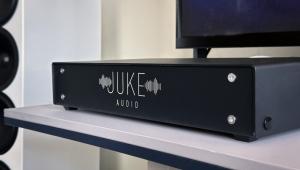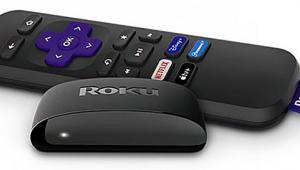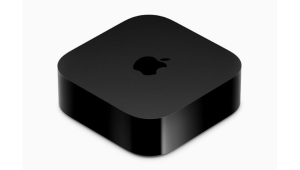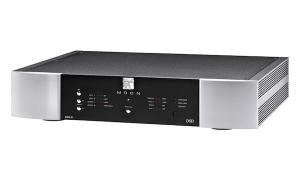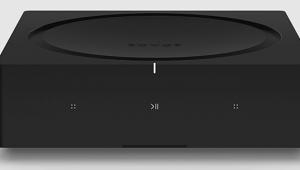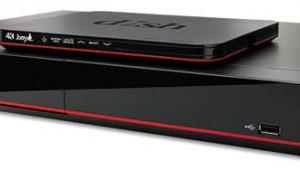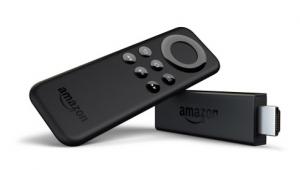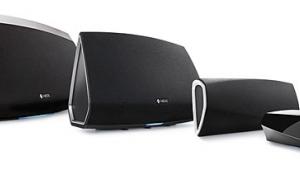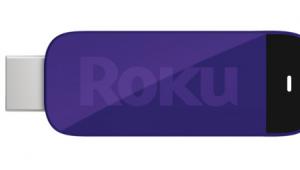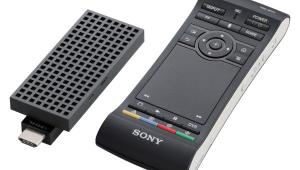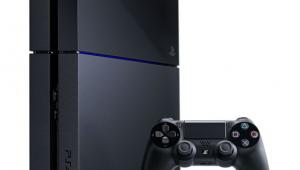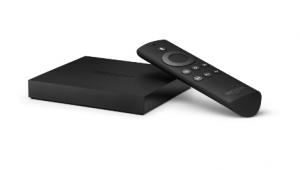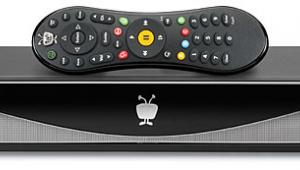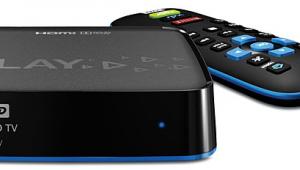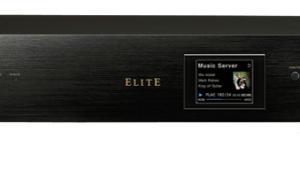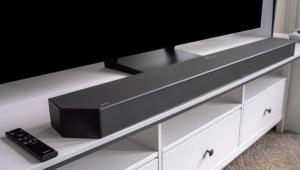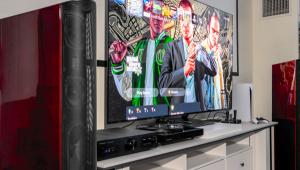Hard to justify paying $4k+ for a streamer that has no room correction or PEQ capabilities...I don't know how an audio system can be considered as high fidelity without those capabilities in 2023.
Teac UD-701n Network Player & AP-701 Power Amplifier Review

AT A GLANCE
Plus
Faultless sound quality
Superb headphone amp
Outstanding build, finish quality
Minus
Less-than elegant app, interface
Expensive
THE VERDICT
Jewel-like stereo separates deliver definitive stereo audio performance.
As a rule I’m not particularly susceptible to the “audio-jewelry” school of component design; I’m a value/performance guy. But I have to allow that Teac’s new 700-series components—the UD-701N Network Player and AP-701B Power Amplifier—have a decidedly seductive vibe. They’re compact but dense, beautiful and beautifully finished, and they sound fabulous.
Japan’s Teac (more correctly “TEAC”) has had several incarnations in the U.S. audio marketplace of the past half-century or so. The firm, which arose from the Tokyo Electro-Acoustic Company, came to prominence here with its affordable, multitrack open-reel (and later, cassette-based) tape recorders, which made studio-like, multi-instrument home recording widely available for the first time, in 1969 and throughout the ’70’s. (Early adopters included Bob Dylan and The Band, at their famous “Big Pink” basement studio in the Woodstock, NY area, while a decade later Springsteen’s “Nebraska” was famously recorded on a Teac multitrack cassette system.)
In the mid ’70’s Teac, with Sony and Philips, launched the Elcaset, a giant-sized enclosed-tape format that promised open-reel performance and flexibility with cassette-like convenience. Sadly, like all too many other examples of technically superior engineering, it launched, bubbled briefly, and sank leaving little trace on the collective audio memory. Teac then became an important purveyor of compact integrated music systems, first cassette- and later CD-based, which came to be called “midi” systems. Finally, in the late 20th century and into the current one the firm morphed into an unabashedly high-end audiophile brand, with limited-production separate components under both its own and its Esoteric names.

The 701N and 701B, as I’ll call them, are examples. The former is a network-streaming preamplifier; the latter a stereo power amp based upon nCore Class D modules from Netherlands’ Hypex. We’ll start with the power amp, by far the simpler unit.

The rear panel presents a spaced pair of heavy, “WBT-type” banana/5-way jacks for each channel, a balanced (XLR-female) and unbalanced input (RCA) ditto, 12v-trigger in and through minijacks, and an IEC power-cord receptacle. A mini-USB port is labeled “Software” (though it’s hard to imagine what software update a power amplifier might need), and mini-slide switches labeled Output Mode Stereo/Biamp, and Auto Power Save On/Off complete the facilities.

The amp’s front is dominated by a gorgeous, beveled-window, amber-lit dual-meter, marked in dB. One of three adjacent toggle switches, also handsomely beveled-in and possessing crisp, positive action, sets meter sensitivity to 0/+20 dB or off; its neighbors select meter brightness and the rear panel’s balanced XLR or unbalanced RCA inputs, while over on the left is a much larger but equally solid-feeling power-switch toggle. The front panel is elegantly brushed, its integrated handles elegantly sculpted, and the side-panel heatsinks elegantly radiused, so elegant’s the word all around.
Which carries over to the star of the pair, the 701N “USB DAC/Network Player," where we see the same brushed finish and handles, complemented by a pair of knobs, the larger Volume, the smaller Source (with a push-to-enter function), that exhibit the gooey-smooth action we expect in high-end gear. Menu and Output pushbuttons, and a power toggle identical to the amplifier’s complete the controls, while the small, amber display between the knobs provides basic visual feedback. There are two headphone outputs: a conventional 1/4-inch stereo, and a four-pin DIN balanced jack.

Around back the 701N is busier, with balanced (XLR) and unbalanced (RCA) inputs and outputs, paired optical and coax S/PDIF digital inputs, and both USB-B (streaming) and -A (drive) ports (another mini-USB port, for firmware updates, is marked “Software.” There’s also a wired-Ethernet network port, of course, plus an RS-232 serial port for a system controller, 12v trigger in/out minijacks, and a Bluetooth antenna bump-out.
The supplied remote controller is unremarkable but complete, with direct-access input keys, and volume/mute at least segregated for easier thumb-location. Notable remaining keys include Upconvert, Filter, and Headphone, all of which we’ll get to. Oh — and the handset was equipped with AC/Delco AAA batteries. Who even knew Delco made these? Not this guy.
Setup & Listening
After placing the very hefty Teacs on my rack, setup consisted of nothing more than plugging in my sources, and speakers. (Both units feature de-coupling tripod feet. These seem disconcertingly rattly at first, but I trust Teac’s vibrational engineering.) I employed a pair of high-quality mic cables to connect the Teac pair in balanced mode—even though I generally consider balanced connection unneeded in short-run consumer settings—because I could. Sources included a CD/SACD player/transport, an outboard DAC (unnecessary, of course, but I wanted to try the 701N’s analog ins) and an Ethernet cable to my rack’s network switch.
Loudspeakers, fed by heavy, banana-terminated cables, were my usual stand-mount, three-way monitors, a very high-resolution, nearly full-range design from Canadian maker Energy (now a part of the Klipsch Group and not as high-end-focused) that, while long discontinued, are competitive with most anything similar made today. They earn their keep in my studio by presenting a stable but moderately demanding electrical load, with quite low sensitivity that imposes a fair challenge to power amplifiers without (I hope!) risking hearing damage.
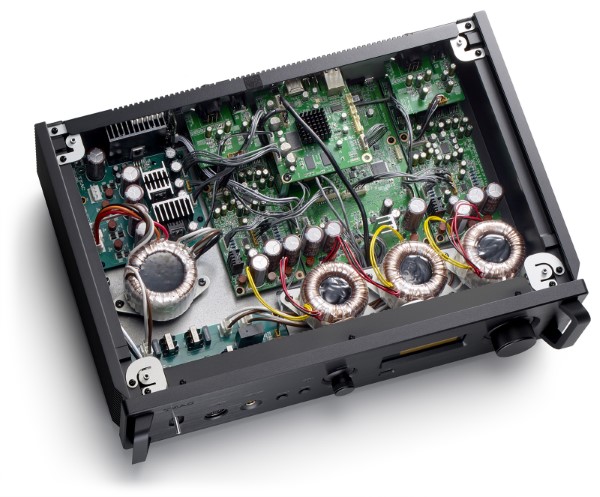
My primary everyday music source is Roon software, which correctly recognized the “Roon-Ready” 701N and was ready to play off the hop. (I also streamed content “direct” via Teac’s app, from Qobuz and Tidal.) The first track I happened upon was the R&B classic “Shaky Ground” from surprising folky-turned-soul-singer Phoebe Snow, from a 2008 live session. This presented with rich detail, forceful dynamics, and a generous soundstage. And indeed, these were the hallmarks of most everything I auditioned via the Teac stack.
Its maker reports the 701N as incorporating a newly designed, proprietary digital-to-analog converter subsystem. This is said to be a delta/sigma (so-called “one-bit”) design built of a discrete-component “ladder” circuit controlled by field-programmable gate arrays—FPGAs—capable of PCM decoding up to 384 kHz/32-bit, and DSD up to 22.5 MHz (This kind of thing is fairly hot in the digital-audiophile world currently.) None of this jargon guarantees any sonic virtues, of course, nor disputes the fact that chip-DACs of similar capabilities and near-perfect specs and measurements are available from popular sources such as AKM for a few dollars each.
But Teac thought it important enough to spell out in its marketing materials, and while I don’t believe that data bits have memory (they don’t “care” what circuit topology they pass through), I can, and will share that my system has never sounded better. A sweeping trial like the brilliantly produced Mahler Fourth from the San Francisco Symphony under Tilson-Thomas (Qobuz, 96 kHz FLAC) sounded magisterial, with a easily discerned depth to the orchestral soundstage, and the kind of effortless clarity of inner voices that I am convinced that only truly full-resolution playback delivers. The clarity with which it presented Mahler’s numinous orchestration (and the Frisco-ans performance) kept me glued to my seat for full movements.
The rather astonishing ur-Streisand recording, Live at the Bon Soir, was just as riveting: not so much for the recording of the backing quartet, which is a bit flat and uninteresting, but for the hypnotic immediacy of that voice. Through the Teac system I could at one and the same time succumb to the spell of the superbly “right here, right now” vocal sound on a tune like the Arthur Hamilton standard “Cry Me a River,” yet still note the “moving parts” behind the recording: the slight squeezing of The Barbra’s chest-tones range, and the equally slight but still obvious compressions and coarsening of the sound when she reached the upper end of her dynamic range in the higher octaves (presumably, compression occurring in a tube-mic, or tube mixer, or something). Now that’s resolution.
How much of this excellence should be awarded to the head end of the Teac twins, and how much to the power amp is difficult to say. I’ve heard many, many a power amp built upon Hypex modules, and have without exception been impressed by their power, dynamic exactitude, and transparency. The Teac is no exception; the firm claims proprietary power-supply and input-amp sections (as do many other Hypex users), but whatever the case, the 701B, which is rated for 125/230 watts into 8/4Ω — conservatively, I’d warrant — had no difficulty driving my low-sensitivity monitors to fully lifelike levels on any music genre I tried. I never once heard it clip, coarsen, or exhibit any sort of audible misbehavior whatsoever.
Briefly: Teac claims careful design and execution of the 701N’s headphone output, a dedicated circuit section. I have three excellent-resolution sets to try: an easy-to-drive but low-sensitivity planar pair, a harder-to-drive (lower impedance) dynamic pair, and, recently, a set of the astonishingly good, ridiculously easy-to-drive (and ridiculously affordable: $22!) 7hz Zero IEMs. Each one sounded as fine as I’ve experienced: ultra-clean, entirely dynamically uninhibited, and sparklingly high resolution. (I auditioned all in two-wire, unbalanced connection mode.) If headphone listening is an important part of your audio jam, with the Teac pre/streamer you can confidently dispense with a separate HP amp.
The Other Stuff
Teac’s supplied remote is unfancy but complete and functional, though a bit short on ergonomic refinement: its 22 identically shaped and surfaced small buttons are laid out to visual, but hardly tactile logic. Nevertheless, this gives hands-free access to virtually all the 701N’s features and functions. Teac HR Streamer app, which I sampled in its iOS form (Android is also available), does the same, with the addition of direct access to music-library files (if present on your local network), and to Qobuz, Tidal, and Spotify subscription services, and to free Internet-radio streams via TuneIn. The app, too, is functional, with access to all the 701N’s features and functions, but its design is frankly, rather crude, with the look and feel of a “my first coding project” creation. It was also a bit unstable, crashing a couple of times - at least, as running on my admittedly aged iPhone XS — for no apparent reason, but always leaving the music playing undisturbed, and re-launching without complaint. There’s also a similar free application, Teac HR Player, a free download for both Mac and Windows from Teac’s website, but I failed to induce the Mac version to recognize the 701N.
Three 701N features require a brief foray into digital-audio arcana. “Upconversion,” accessible from the front panel, remote, or app, allows you to choose among 2x, 4x, 8x oversampling for incoming, un-oversampled PCM data; “filter” sets the DAC’s “extra” anti-aliasing filter, when in DSD mode, to one of two modes (I could find no discussion of these anywhere in Teac’s materials). Anyway, while I tried manfully to detect meaningful effects from these, it was only on headphones, and only on the Upconversion option, that I may have succeeded. Though what the changes were, I’m damned if I can say: a barely detectable (or not?) shift in “texture” or “density” of ambience and background noise is about as close as I can come. The 701N also proffers a Clock-Sync input, for slaving its DAC to an external clock — this is mostly a recording-studio fetish — but I had no external clock source on hand so was not able to exercise it.
I briefly tried the Teac’s Bluetooth input, and it sounded okay. This is equipped with aptX-HD codec readiness, but my phone and iPad are not. A higher-rez BT source would no doubt have yielded something a bit better. Similarly briefly, the 701N’s analog input, serving my external D/A converter, sounded as good as ever. Ditto-ditto the Teac’s coax input, fed from my Philips CD/SACD player, the source for my Upconversion adventures. Lastly, Teac’s design can directly decode DSD (SACD format digital audio) files up to 22.5 mHz. I played a handful of my collection of several dozen DSD files, and they sounded uniformly excellent. They always do, but I mention this in the interest of completeness. And again lastly — I mean it this time — the 701N can function as a full MQA decoder/renderer, which it did on the appropriate files I played from Tidal. But given MQA’s current limbo (Tidal is busily converting much of its library to lossless FLAC), that’s all that needs saying about that.
And there you have it: lovely, high-end, fully audiophile-qualified stereo-audio excellence, soup to nuts: no excuses required. Except for the value question.
It would be disingenuous to omit the fact that you can buy a Hypex nCore-based stereo power amp with on-paper performance equivalent to the 701B’s for less—a lot less. Similarly, standalone streamers are as thick as sumac these days, beginning with items like the remarkably high-value ($220) WiiM Pro Plus, though finding one with exactly the same feature set as Teac’s is going to be tough.
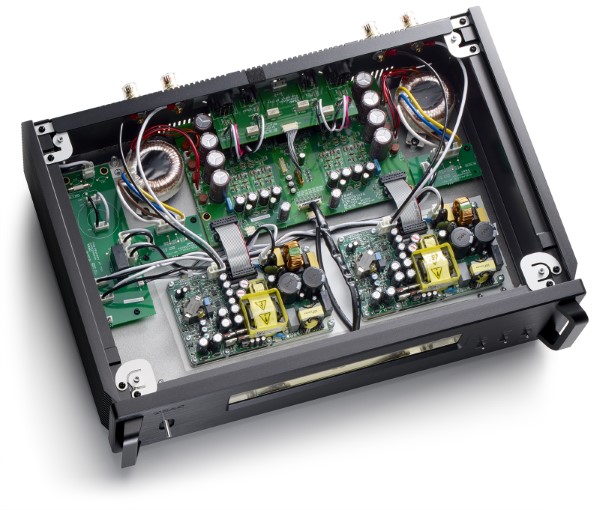
Is the Teac duo “worth it?” Only you can say. Teac’s UD-701N/AP-701 twins are intelligently designed, very full featured for their ilk, and beautifully made. And they deliver gorgeous, sumptuous, unimpeachable stereo audio playback. What price you put on these virtues is up to you.
Specs
UD-701N D/A Converter/Streamer
DIGITAL AUDIO INPUTS: 1 coax, 1 optical SPDIF (16-bit/192 kHz), USB-B (16-, 24-bit/to 384 kHz, DSD to 22.5 mHz; 2 USB-A for storage device (1 front panel), 1 USB-B/streaming; Ethernet (to 32-bit, 384 kHz/22.5 mHz DSD)
ANALOG INPUTS: 1 balanced/XLR, 1 unbalanced/RCA ; audio outputs: stereo, 1 balanced/XLR, 1 unbalanced/RCA; Headphones: 1 unbalanced 1/4"-stereo, 1 4-pin XLR balanced
OUTPUTS: Dual selectable (front panel) stereo speaker outputs (multiway binding posts), pre-out (preamp output: linked to main-in), mono subwoofer out at fixed 80 Hz low-pass, headphone (1/4-in. stereo, front panel)
NETWORK: Bluetooth aptX HD, wired gigabit Ethernet (streaming); on-board streaming: Spotify Connect, Tidal Connect, Qobuz, TuneIn
DAC: 32-bit/384 kHz-capable proprietary delta/sigma, dual-mono config.
ADDITIONAL: 12v trigger in/out, RS-232 serial port (control)
DIMENSIONS (WxHxD, Inches): 17.5 x 4.5 x 13.25, 26.2 lb.
AP-701 Stereo Power Amplifier
ANALOG INPUTS: balanced/XLR, unbal/RCA
POWER OUTPUT: 125/230 watts x 2 (8/4Ω) at 1% THD at 1 kHz (manuf. publ. Spec.)
THD: 0.003% (at 55W at 8Ω at 1 kHz)
12v-trigger in/out on minijack
DIMENSIONS (WxHxD, Inches): 17.5 x 4.5 x 13.775 in., 21.8 lb
- Log in or register to post comments




